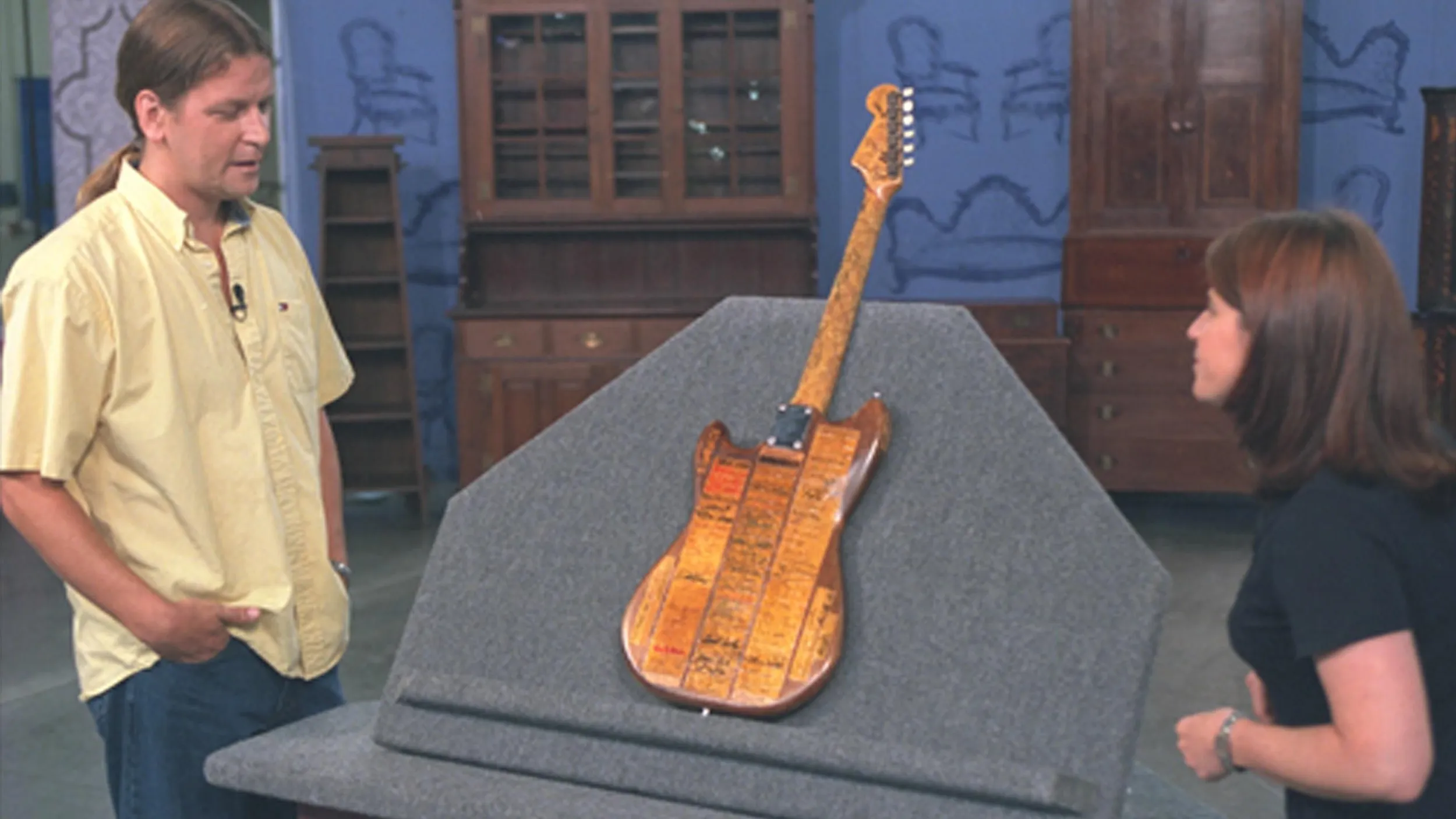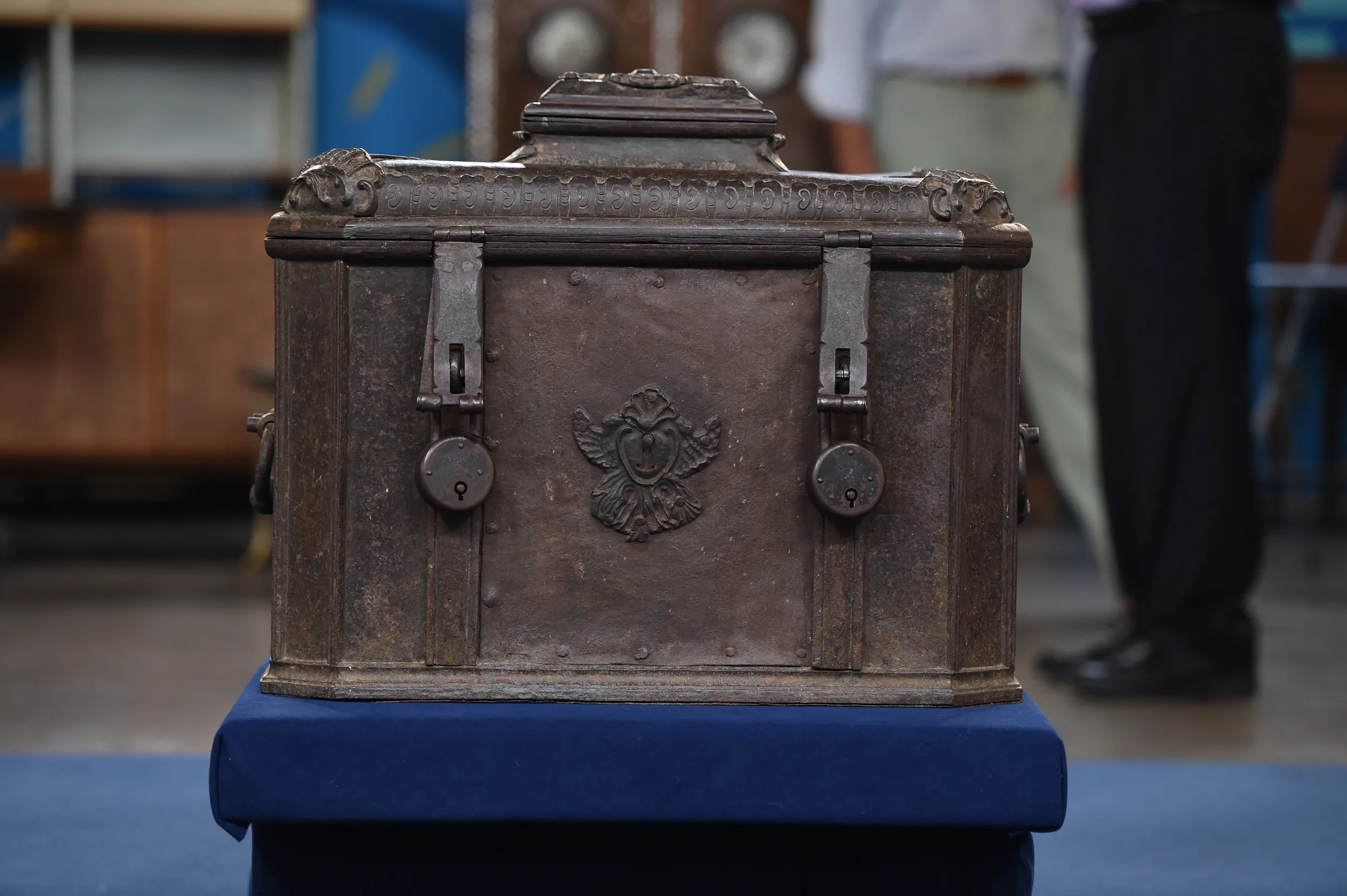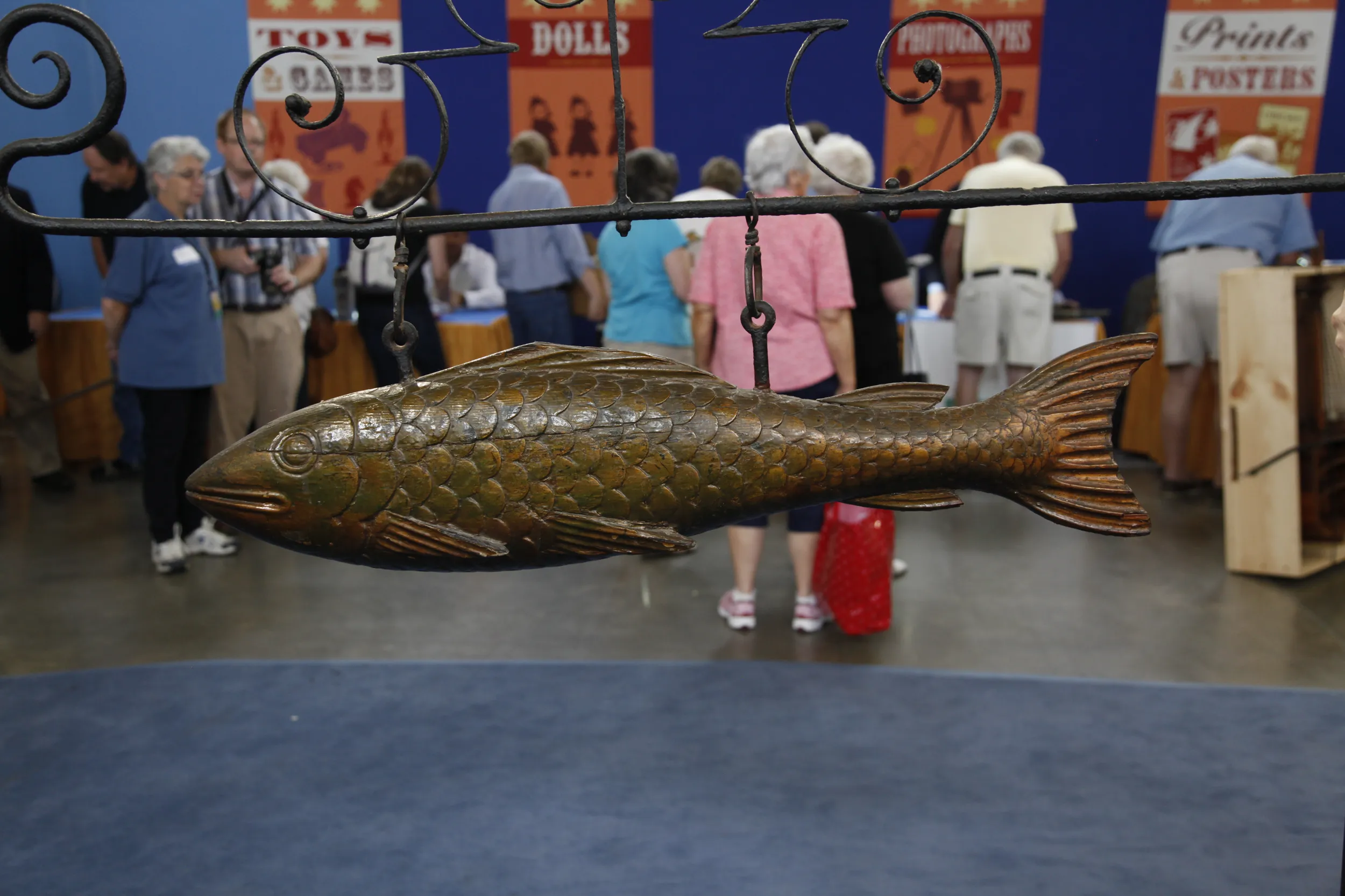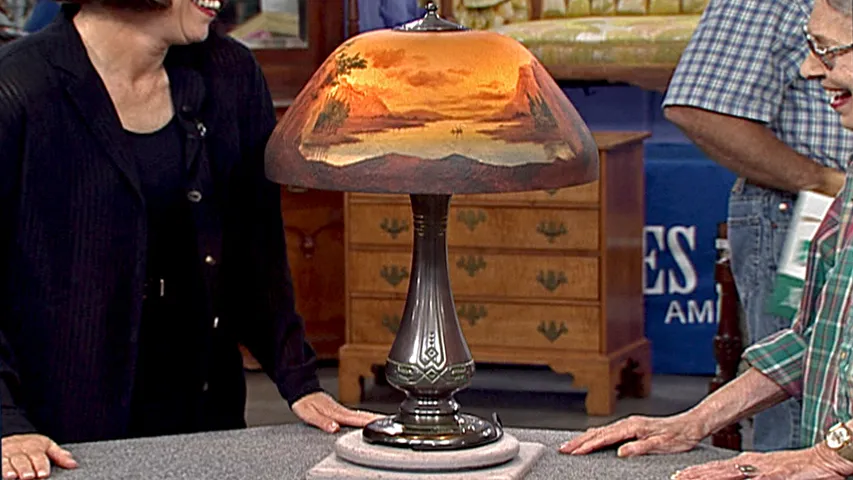GUEST: Well, my grandfather purchased this near Swindon, England, at an antique shop around 1953, when he was stationed there for the Air Force. And that's about all I know. My grandma's had it ever since.
APPRAISER: What did your grandmother say about it?
GUEST: She didn't say very much. She just asked me to take it to the show and see what you guys would say about it.
APPRAISER: It's actually... the sword was made in India.
GUEST: Okay.
APPRAISER: And it's a type of weapon that's called a "shamshir,”and it's a hunting sword. And the work on this sword is called "Koftgari work" and what it is, is it's an iron hilt that's been inlaid with gold. And at the pommel, the end of the sword, there's a parrot there. And right above it is a little goose's head on top of it. And then, all floral work has been, you know, inlaid in gold over the surface, including a rather lengthy inscription that's on there, and the inscription is a poem in Persian. But it's a beautifully made sword. If you also look at the blade, you'll notice that the blade has a fine grain in it that they referred to as "Damascus steel" or "watered steel," and if you had that polished a bit more, you could actually see the grain much more pronounced than it is. It could use a good oiling and a cleaning. Now, what did you think it was worth?
GUEST: I'm not sure. Well, knowing my grandpa, he never would have paid more than $10 or $20 for it, so I don't think it's worth that much.
APPRAISER: Really? It's worth about $3,000.
GUEST: Okay.
APPRAISER: These kind of swords are very, very popular now, because they're beginning to understand the complexity of the way these blades were made and the workmanship, you know, involved in them. And they're just very, very fine, fine, quality pieces of work.










